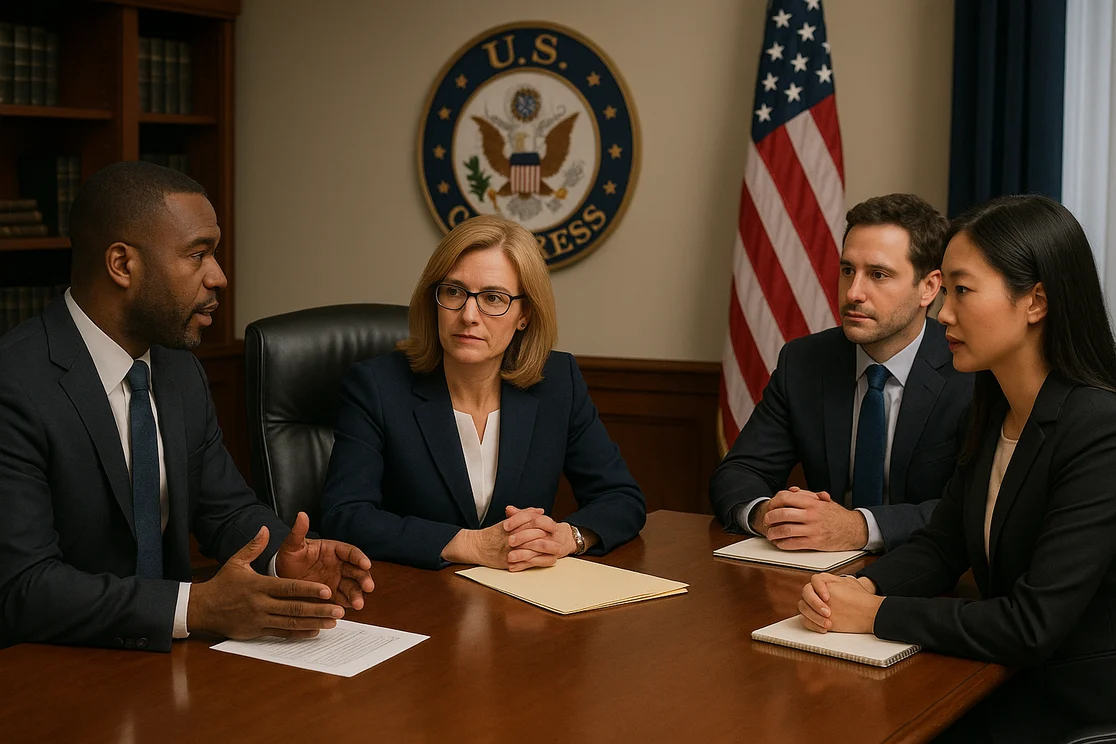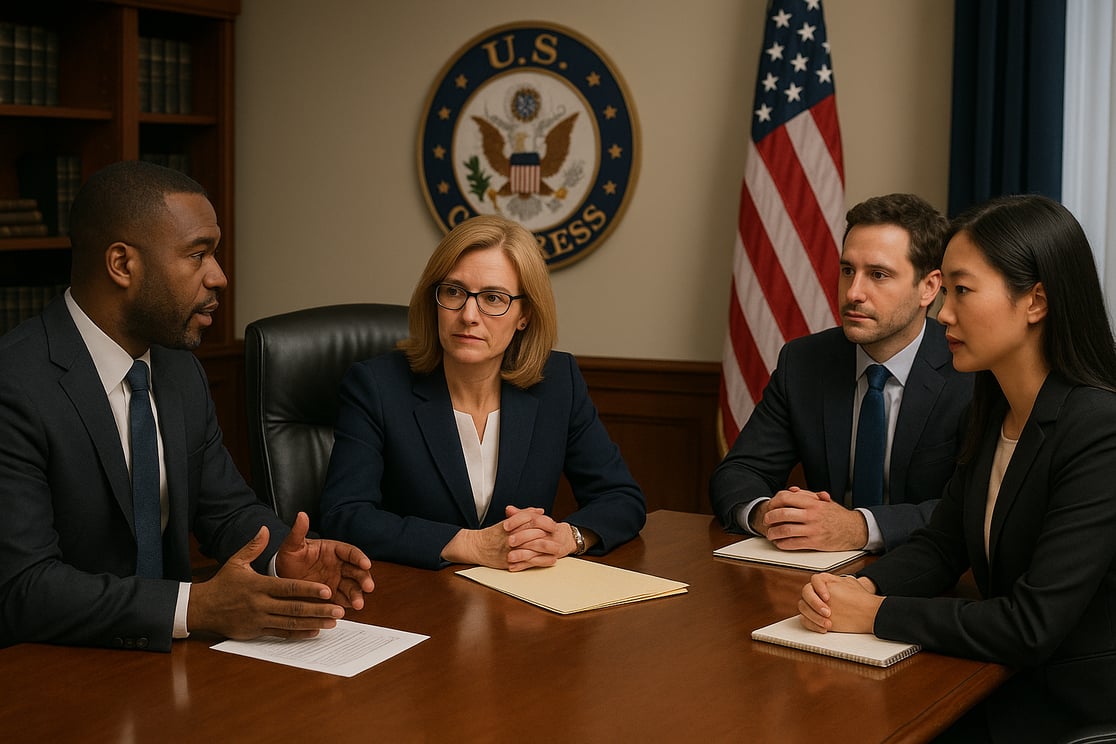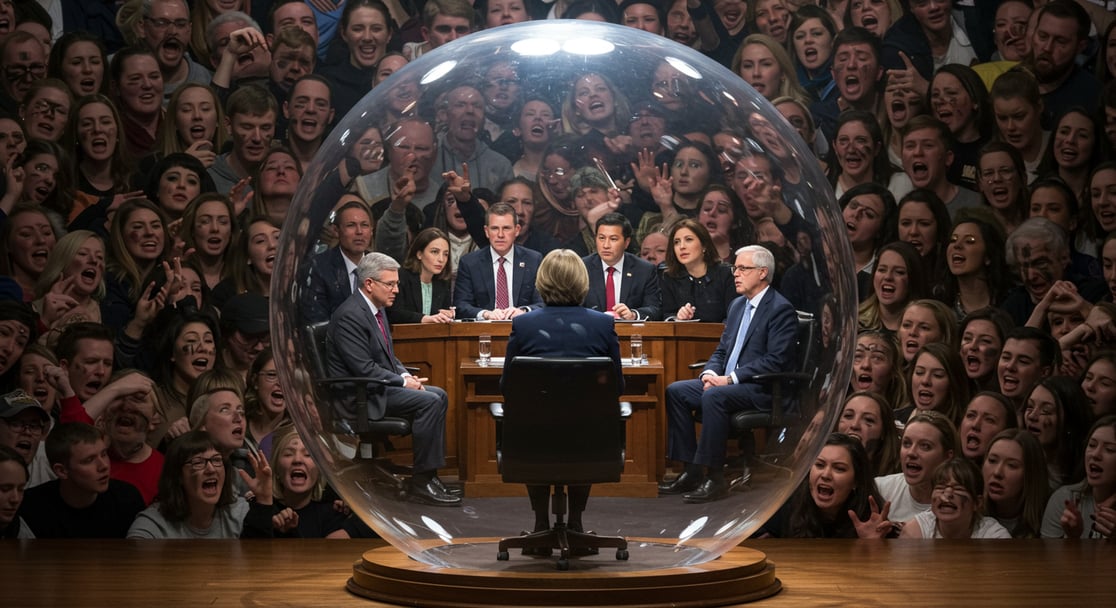

🔱 Sign up for a free demo today to see how the latest AI and digital advocacy tools can transform your work.
2.5 Minute Read
In last week's newsletter, we asked the question, "why are you treating every political influencer the same?" Our point was that a Chief of Staff should be treated one way in a public affairs campaign, while a junior lobbyist across town should be treated quite differently. Yet most campaigns lump the entire audience together, which means they dramatically reduce the number of their communications to the influencers who matter most.
In today's newsletter, we ask an even more fundamental question that could save you from wasting 99% of your budget. How many influencers does your decision-maker actually have?
To answer that question, imagine a Member of Congress's office that you've been in. Maybe you were a Chief of Staff in that office yourself, an intern, or a lobbyist visiting for a meeting. It's time for the Member to decide how to vote on a key issue. The sound-proof door to the Member's personal office closes. How many people are actually in the room with the Member?
The answer to that question should be your guidepost for every advocacy decision you make.

In the early 90s, British anthropologist Robin Dunbar published an influential work that remains the gold standard for understanding human networks. Through studying primate brain structures and human social networks, he found that people can only maintain about 150 meaningful relationships. But within that number, only about 15 people form our truly close circle—the ones whose opinions genuinely sway our decisions.
Numerous studies have since confirmed what has become known as "Dunbar's number." You might have read about this concept in Malcolm Gladwell's, The Tipping Point, Yuval Noah Harari's, Sapiens, or other popular works. "Dunbar's number" is based on neuroscience showing that our prefrontal cortex literally has a cognitive limit on how many deep relationships it can manage. This is why every president has had their "kitchen cabinet"—the term dates back to Andrew Jackson, who bypassed his official cabinet to meet with trusted advisors in the White House kitchen.
Think of it like your phone's contact list. You might have 500 names stored, but how many people did you actually text this week? Our brains have limited bandwidth for real relationships. So human networks converge around these two numbers—about 15 people in our inner circles, and about 150 people in our outer orbits.
But what do most "influencer targeting" campaigns do? They waste precious resources communicating to thousands of people.
NO ONE has thousands of influencers.

In some public affairs debates, there is value in reaching a broader group of people. But it's critical to be precise about who is who when you're making critical advocacy decisions with limited resources. Actual influencers to your decision-maker are few. Political insiders are many. If your goal is to shape insider opinion as a bank shot to shaping your decision-maker's opinion, fair enough. But let's be clear what that means for your budget:
Say you're targeting 5,000 "influencers" with a $50,000 budget, you're spending just $10 per person. But if you precisely target the 15 people who actually have your decision-maker's ear, you can deliver 333x more messages to the people who truly matter.

🔱 Think of an elected official or organization leader you have worked closely with, present or past. How many people were actually in the room when key decisions got made? Write those names down and see how many you can list.
🔱 Review your last campaign and determine how many so-called "influencers" you paid to reach.
🔱 For your next campaign, make the distinction between "influencers" and "insiders." If you have the budget to reach both groups, consider doing so. But only target insiders after you have maxed out the number of messages you can deliver to actual influencers.
🔱 If you're enjoying this content, please consider forwarding this email to your 15 actual influencers.
🔱 If you're not already a subscriber, please sign up here to stay up to date on the latest developments in political technology.
🔱 If you have suggestions for future newsletters or any other feedback, we'd love to hear from you.